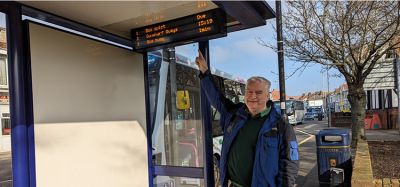Hawaii project prepares state for future of CAV integration
- Like
- Digg
- Del
- Tumblr
- VKontakte
- Buffer
- Love This
- Odnoklassniki
- Meneame
- Blogger
- Amazon
- Yahoo Mail
- Gmail
- AOL
- Newsvine
- HackerNews
- Evernote
- MySpace
- Mail.ru
- Viadeo
- Line
- Comments
- Yummly
- SMS
- Viber
- Telegram
- Subscribe
- Skype
- Facebook Messenger
- Kakao
- LiveJournal
- Yammer
- Edgar
- Fintel
- Mix
- Instapaper
- Copy Link
Posted: 5 August 2020 | Sam Mehmet (Intelligent Transport)
The University pilot project will connect vehicles, pedestrians and bicyclists to surrounding infrastructure and collect data in order to inform others of traffic flow and potential incidents.


A University of Hawaiʻi at Mānoa College of Engineering pilot project is expected to improve traffic flow through a critical Honolulu corridor and help the state prepare for future use of connected, autonomous vehicle (CAV) technologies, while giving students hands-on experience to prepare them for future careers.
The new initiative – established through a partnership with Econolite, the State of Hawaiʻi Department of Transportation (HDOT), Federal Highway Administration (FHWA) and Goldwings Supply – will utilise “Vehicle-to-Everything” communication technology, which connects vehicles, pedestrians and bicyclists to surrounding infrastructure. Signal devices have been installed at more than 30 intersections along Nimitz Highway and Ala Moana Boulevard.
The researchers said that the data will detail the amount, type and efficiency of the vehicles moving through the area. Based on the data, the public can then receive alerts and other information on potential impacts along the corridor through a free mobile application called ‘TravelSafely’.
Total funding for the deployment of this state-of-the-art system and research was $6 million, with 95 per cent coming from FHWA.
David Ma, College of Engineering interim associate dean and professor, said students and faculty will spend four years analysing the opportunities and challenges with the system so the state will be more prepared for future use of CAV technologies; conducting research on sensor and data analytics to assist the system to operate to its full potential; and establishing a modern traffic engineering lab that will allow students to have first-hand experience of the most advanced traffic engineering technologies available and better prepare them for their future careers.
“In order to help the State of Hawaii move forward with its visionary plan for future CAVs deployment, UH College of Engineering is proud to lead this effort of upgrading the traffic signal system of Nimitz Highway,” Ma said. “Not only will this project create a smart transportation corridor in the heart of downtown Honolulu, it also serves to show the state and UH’s commitment both to high-tech applications and to a safer, more efficient transportation system for Hawaii.”
The new lab will be equipped with advanced traffic control, management and detection devices as well as a modern video wall for data visualisation. Ma said the system will be a “game changer” for the College of Engineering.
“It will create unprecedented opportunities in cutting-edge research in traffic mobility and safety, such as vehicle-infrastructure integration, connected vehicle system control, arterial-wide speed harmonisation and more,” Ma said. “The lab will become a mini traffic management centre that enables UH researchers to analyse traffic data in real time and help HDOT staff make necessary adjustments to optimise the performance of the traffic system.”
“Honolulu is a perfect location to expand the project and transform the entire city into a connected vehicle environment. Hawaii is in a unique position to extend the current project and extrapolate a completely connected environment in a very similar fashion to the progress made by Singapore which is perhaps one of the most advanced countries/states in the world. As an insulated environment, there are a finite number of vehicles that can enter the state, a comparatively smaller population, but a dynamic urban and rural environment,” the researchers commented.
Related topics
Connected & Autonomous Vehicles, Infrastructure & Urban Planning, Traffic Management, Travel & Passenger Information, Vehicle & Passenger Safety
Related modes
Autonomous vehicles
Related cities
Hawaii
Related organisations
Econolite, Federal Highway Administration (FHWA), Goldwings Supply, State of Hawaiʻi Department of Transportation (HDOT), University of Hawaiʻi at Mānoa
Related people
David Ma








